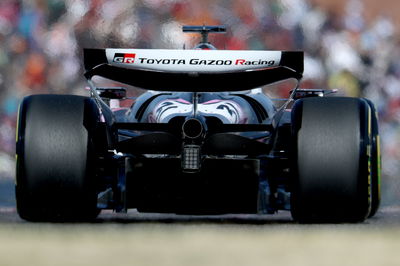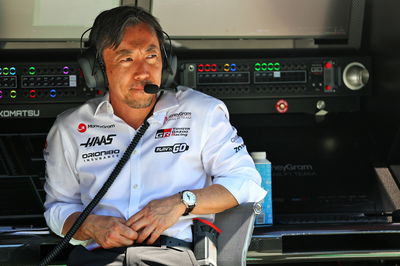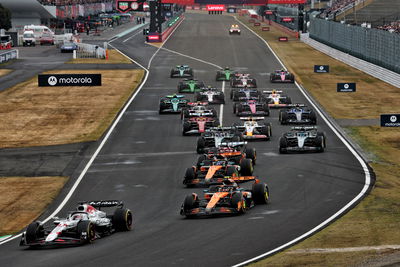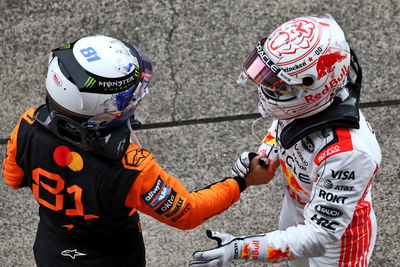Explained: Toyota partnership helping Haas ‘where Ferrari can’t’
Haas is utilising the expertise of three different companies this year, with Toyota joining Ferrari and Dallara as a partner.

Haas’ new technical partnership with Toyota is helping the squad in areas where regulations prevent Ferrari from getting involved, according to team principal Ayao Komatsu.
Haas inked a deal with Toyota Gazoo Racing in October last year, bringing the world’s largest car maker back to F1 in some capacity.
Under their tie-up, the Japanese brand has been providing Haas with technical know-how and additional resources, helping it climb up the ladder amidst its budget and personnel constraints.
Thanks to the additional sponsorship money from Japan, Haas has been able to start a TPC (testing of previous cars) programme for the first time, giving its 2025 recruits Esteban Ocon and Oliver Bearman an opportunity to drive old machinery at Jerez in January prior to the start of the new season.
However, the new relationship with Toyota has not affected Haas’ existing contract with Ferrari, which has been supplying engines and other parts to the American squad since its entry into F1 in 2016.
In fact, Haas’ Japan-born team boss Komatsu said Toyota is supplementing the efforts of Ferrari and the team is still figuring out how to expand the scope of their partnership.
Technical regulations require each team to design and build certain ‘listed’ components on their own to be eligible as a ‘constructor’, while other parts can be sourced from other outfits like Ferrari.
“This team doesn’t exist without Ferrari,” Komatsu was quoted by The Japan Times. What Toyota is bringing to us is in the areas that Ferrari can’t help us, by the regulations.
“Of course, we are thinking about what we can do short-term, medium-term, long term, but really we are still at the stage of understanding each other. It’s going well, but like any big project, any big collaboration with two very different companies, it will take time.
“As we understand each other more and more, we understand each other's capabilities, strengths and weaknesses, and I'm sure we will find more areas to collaborate.”

Toyota also stands to benefit from the partnership, with Haas slated to become a learning ground for its engineers and mechanics.
Its long-time factory driver Ryo Hirakawa was also appointed as Haas’ reserve driver after the Japanese Grand Prix, with his role including four practice outings during the rest of the season.
While Haas is arguably the smallest team on the grid, Toyota Gazoo Racing director Masaya Kaji feels the partnership makes complete sense for the automaker.
“They have a small amount of people but the results and process-wise, it’s a very amazing performance, and so it’s very attractive,” Kaji said.
“Their strong points and weak points perfectly fit our weak points and strong points so that we can achieve a strong connection.”
Both Toyota and Haas have made it clear that their partnership will continue for the long-term.
Kaji said their collaboration is “just the beginning”, suggesting that the two parties could strengthen their ties in the future.
“Our drivers and engineers are very motivated that we are challenging the top category, and they can learn all the things from top-end cars,” Kaji said.
“So the first thing is people’s motivation is a great thing for us and for technology, I think that will be from now.
“It’s just the beginning.”
Toyota previously entered F1 with a works team in 2002 but withdrew from the series before the end of the decade due to mounting losses for the car maker during the recession.
The F1 project was severely criticised, as Toyota failed to achieve a single win in eight seasons despite its astronomical budget.











